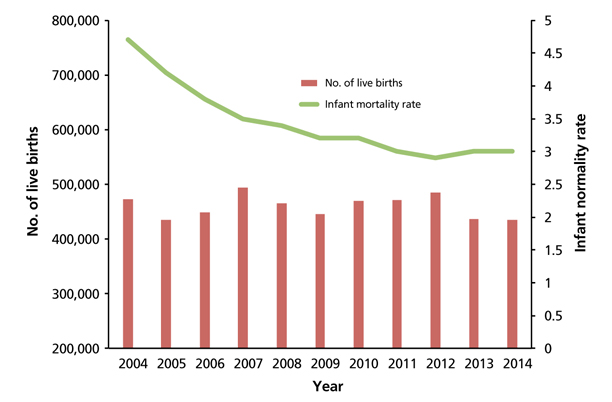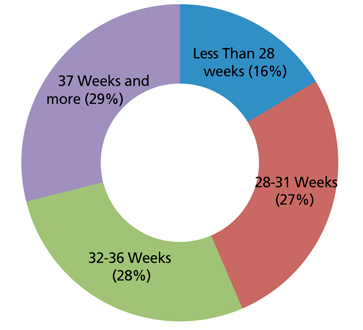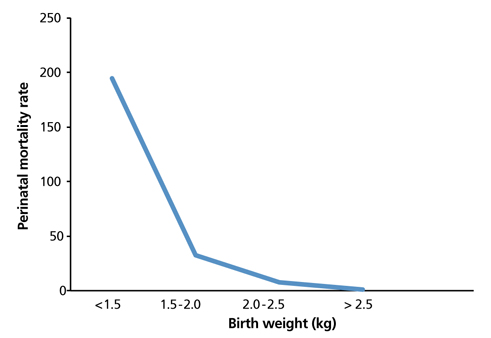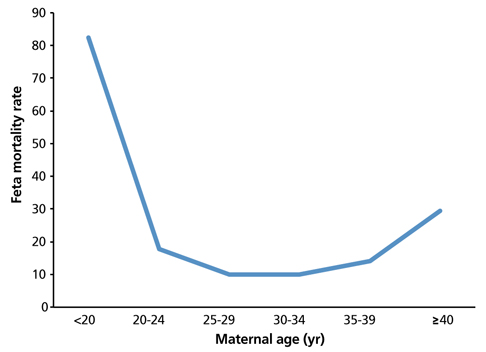J Korean Med Assoc.
2017 Jul;60(7):588-597. 10.5124/jkma.2017.60.7.588.
Infant, maternal, and perinatal mortality statistics in the Republic of Korea, 2014
- Affiliations
-
- 1Vital Statistics Division, Statistics Korea, Deajeon, Korea.
- 2Department of Family Medicine, Myongji Hospital, Seonam University College of Medicine, Goyang, Korea.
- 3Department of Parasitology and Institute of Medical Education, College of Medicine, Hallym University, Chuncheon, Korea. shuh@hallym.ac.kr
- KMID: 2386600
- DOI: http://doi.org/10.5124/jkma.2017.60.7.588
Abstract
- This study aimed to analyze infant, maternal, perinatal, and fetal mortality statistics in the Republic of Korea (Korea), 2014. It was based on the open-access data available from the Statistics Korea website (http://kostat.go.kr/portal/eng/index.action). Recent trends in these vital statistics were also examined. The results of this study constitute a descriptive presentation and analysis of the national data. The number of infant deaths was 1,305 out of 435,435 live births in 2014, and the infant mortality rate was 3.0. The number of maternal deaths was 48. The maternal mortality ratio per 100,000 live births was 11.0. The maternal mortality ratio per 100,000 women of child-bearing age (15 to 49 years old) was 0.37. The number of perinatal deaths was 1,365, and the perinatal mortality rate was 3.1. The number of fetal deaths was 5,317. The fetal mortality rate was 12.1. The trends in those vital statistics in recent years were consistent except for a few findings, including a decrease in the maternal mortality ratio of pregnant women 40 years old and older and a change in the proportions of the causes of infant death, with a decrease in mortality due to neonatal respiratory distress and an increase in mortality due to bacterial sepsis. Although these vital statistics were generally consistent, some aspects varied by year. Pregnant women less than 20 years old should be monitored more intensively for their babies' health. Our findings can serve as basic data supporting the establishment of health policies by the Korean government.
MeSH Terms
Figure
Cited by 2 articles
-
Maternal, infant, and perinatal mortality statistics and trends in Korea between 2009 and 2017
Kyung Ju Lee, Sangho Sohn, Kwan Hong, Jin Kim, Rakhyeon Kim, Seokmin Lee, Heejo Youn, Young Ju Kim
Obstet Gynecol Sci. 2020;63(5):623-630. doi: 10.5468/ogs.20081.How to write a death certificate: from a statistical point of view
Hyun-Young Shin, Seokmin Lee
J Korean Med Assoc. 2018;61(4):268-278. doi: 10.5124/jkma.2018.61.4.268.
Reference
-
1. Act on the Registration, etc. of Family Relationship. 2016. 05. 29. No. 14169.2. Act on Funeral Services, etc. 2013. 08. 06. No. 11998.3. World Health Organization. International statistical classification of diseases and related health problems 10th revision [Internet]. Geneva: World Health Organization;2016. cited 2016 Feb 9. Available from: http://apps.who.int/classifications/icd10/browse/2016/en.4. Statistics Korea. Korean standard classification of diseases and causes of death (KCD-6) [Internet]. Daejeon: Statistics Korea;2011. cited 2016 Mar 9. Available from: http://kostat.go.kr/portal/eng/index.action.5. Barfield WD. Standard terminology for fetal, infant, and perinatal deaths. Pediatrics. 2011; 128:177–181.
Article6. Organization for Economic Cooperation and Development. Perinatal mortality [Internet]. Paris: Organization for Economic Cooperation and Development;2007. cited 2017 Apr 11. Available from: https://stats.oecd.org/glossary/detail.asp?ID=2038.7. World Health Organization. Neonatal and perinatal mortality: country, regional and global estimates [Internet]. Geneva: World Health Organization;cited 2017 Apr 11. Available from: http://apps.who.int/iris/handle/10665/43444.8. Seo K, Won HJ, Cho JS, Park YW, Kim SK, Lee K. Fetal growth restriction was a major cause of increased perinatal mortalities of postterm pregnancies. Korean J ObstetGynecol. 2003; 46:2033–2038.9. Yeom W, Paik ES, An JJ, Oh SY, Choi SJ, Roh CR, Kim JH. Clinical characteristics and perinatal outcome of fetal hydrops. Obstet Gynecol Sci. 2015; 58:90–97.
Article10. MacDorman MF, Gregory EC. Fetal and perinatal mortality: United States, 2013. Natl Vital Stat Rep. 2015; 64:1–24.
- Full Text Links
- Actions
-
Cited
- CITED
-
- Close
- Share
- Similar articles
-
- Maternal, infant, and perinatal mortality statistics and trends in Korea between 2018 and 2020
- Analysis of the Causes and Trends of Maternal Mortality in Korea: 2009-2014
- Maternal, infant, and perinatal mortality statistics and trends in Korea between 2009 and 2017
- Changes in Neonatal and Perinatal Vital Statistics during Last 5 Decades in Republic of Korea: Compared with OECD Nations
- Bench-marking of Japanese Perinatal Center System for Improving Maternal and Neonatal Outcome in Korea






